I am trying to make a color map that 'favors' lower values, i.e. it takes longer to get out of the darker color to get to the light color. At the moment I am using this as the colormap:
cmap = clr.LinearSegmentedColormap.from_list('custom blue', ['#ffff00','#002266'], N=256)
I am plotting this around a cylinder to see the effect (see code for cylinder at the end of the post), this is what happens when you run the code:
As you can see this is very 'linear'. The color starts changing about halfway along the cylinder. Is there a way to increase the threshold for when the colors start to change rapidly? I.e. I want only very high numbers to have the brightest level of yellow. Thanks.
from matplotlib import cm
from matplotlib import pyplot as plt
from mpl_toolkits.mplot3d import Axes3D
from scipy.linalg import norm
from mpl_toolkits.mplot3d.art3d import Poly3DCollection
import numpy as np
import math
import mpl_toolkits.mplot3d.art3d as art3d
import matplotlib.colors as clr
fig = plt.figure()
ax = fig.add_subplot(111, projection='3d')
origin = [0,0,0]
#radius = R
p0 = np.array(origin)
p1 = np.array([8, 8, 8])
origin = np.array(origin)
R = 1
#vector in direction of axis
v = p1 - p0
#find magnitude of vector
mag = norm(v)
#unit vector in direction of axis
v = v / mag
#make some vector not in the same direction as v
not_v = np.array([1, 0, 0])
if (v == not_v).all():
not_v = np.array([0, 1, 0])
#make vector perpendicular to v
n1 = np.cross(v, not_v)
#normalize n1
n1 /= norm(n1)
#make unit vector perpendicular to v and n1
n2 = np.cross(v, n1)
#surface ranges over t from 0 to length of axis and 0 to 2*pi
t = np.linspace(0, mag, 600)
theta = np.linspace(0, 2 * np.pi, 100)
#use meshgrid to make 2d arrays
t, theta = np.meshgrid(t, theta)
#generate coordinates for surface
X, Y, Z = [p0[i] + v[i] * t + R * np.sin(theta) * n1[i] + R * np.cos(theta) * n2[i] for i in [0, 1, 2]]
#THIS IS WHERE THE COLOR MAP IS
cmap = clr.LinearSegmentedColormap.from_list('custom blue', ['#ffff00','#002266'], N=256)
col1 = cmap(np.linspace(0,1,600)) # linear gradient along the t-axis
col1 = np.repeat(col1[np.newaxis,:, :], 100, axis=0) # expand over the theta- axis
ax.plot_surface(X, Y,Z, facecolors = col1, shade = True,edgecolors = "None", alpha = 0.9, linewidth = 0)
ax.view_init(15,-40)
plt.show()

